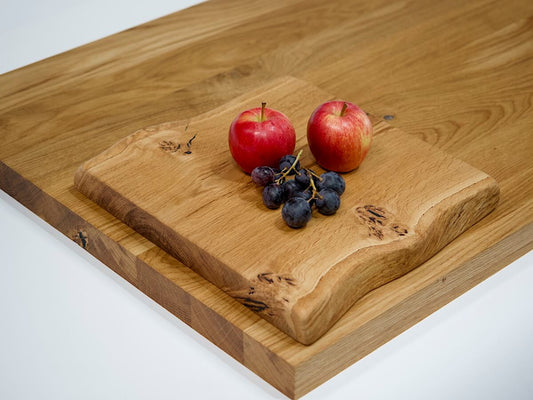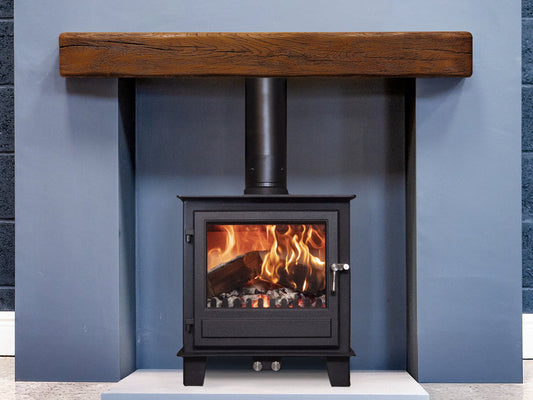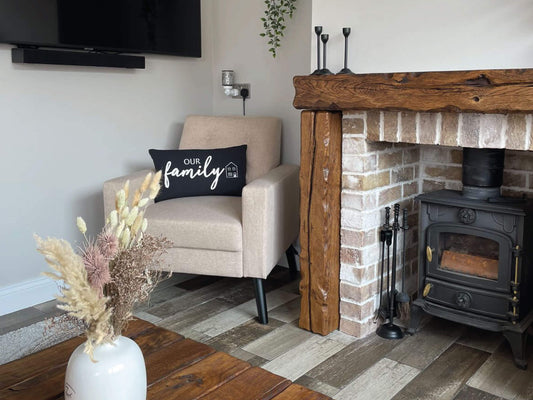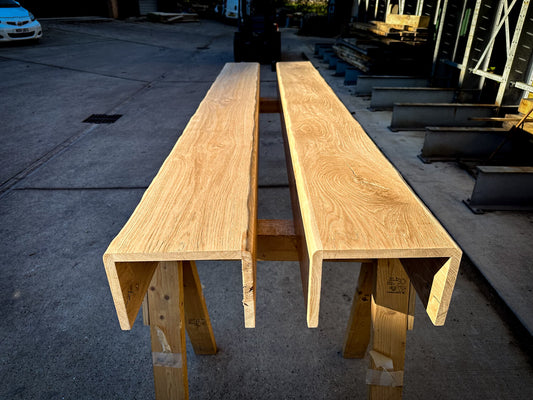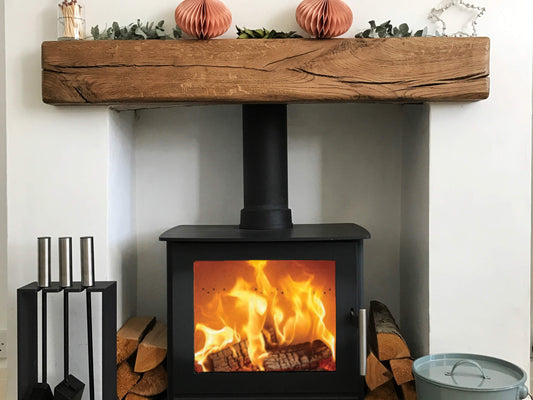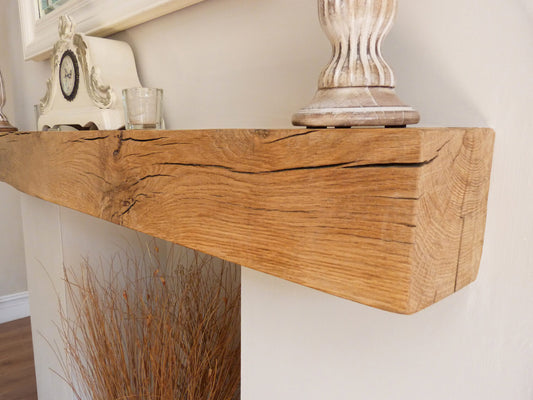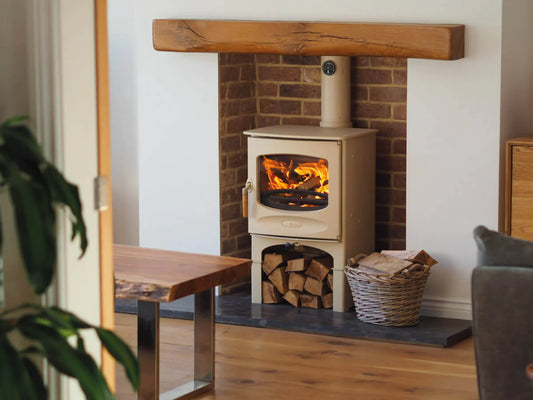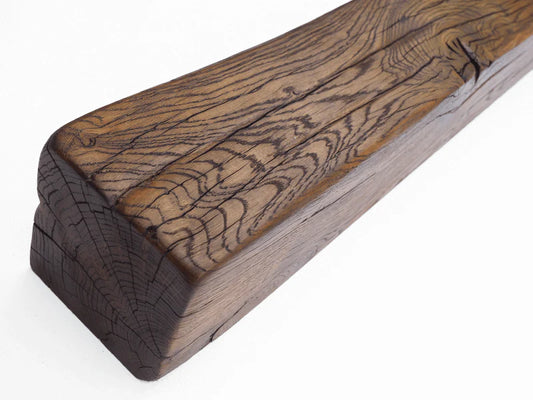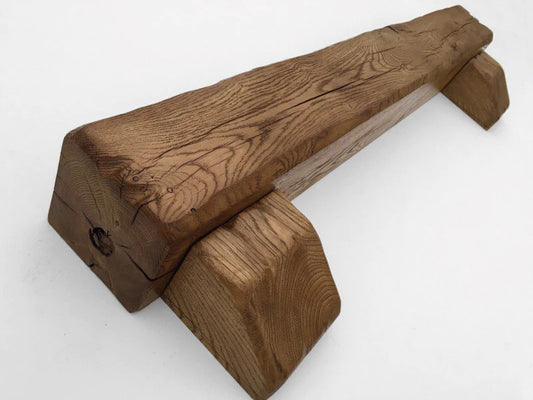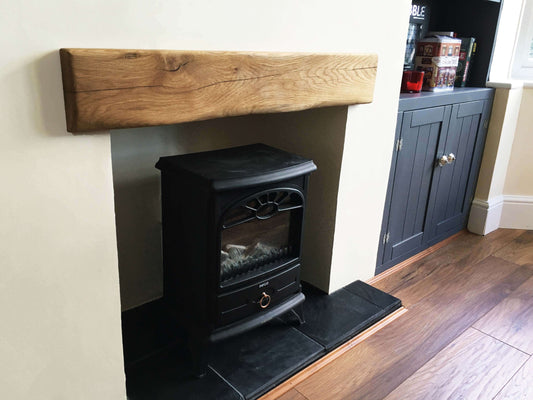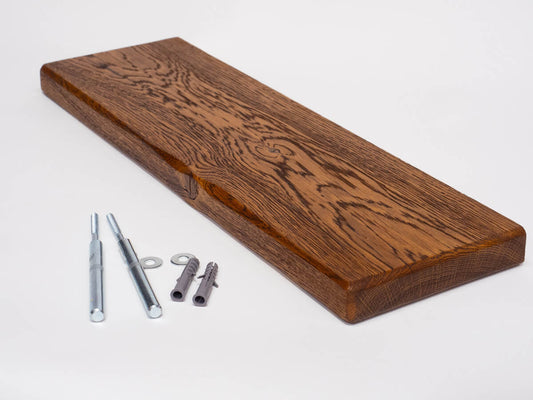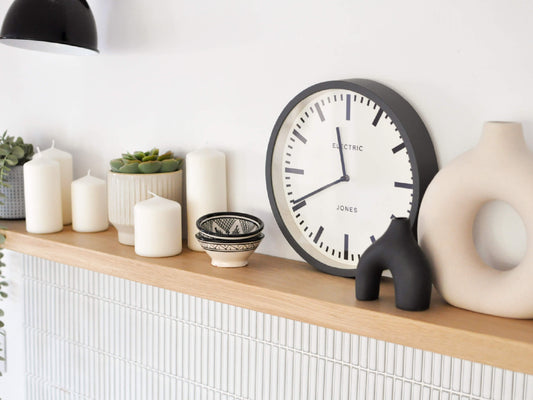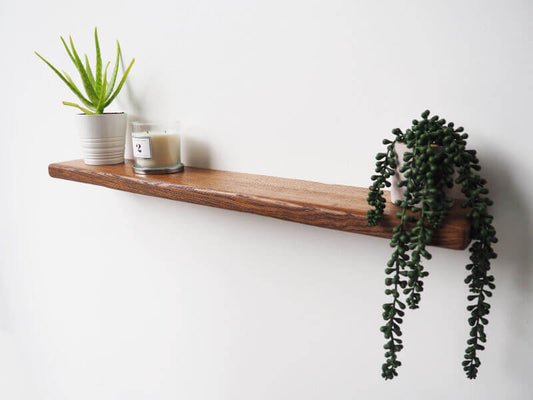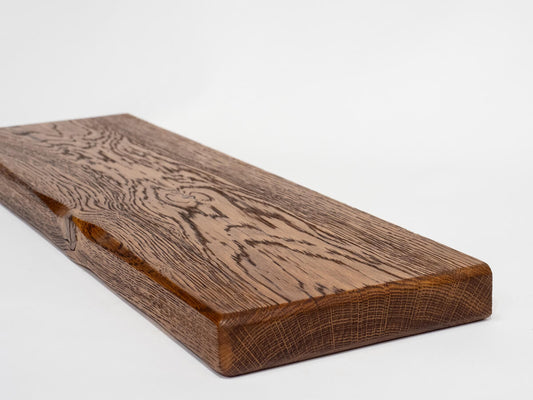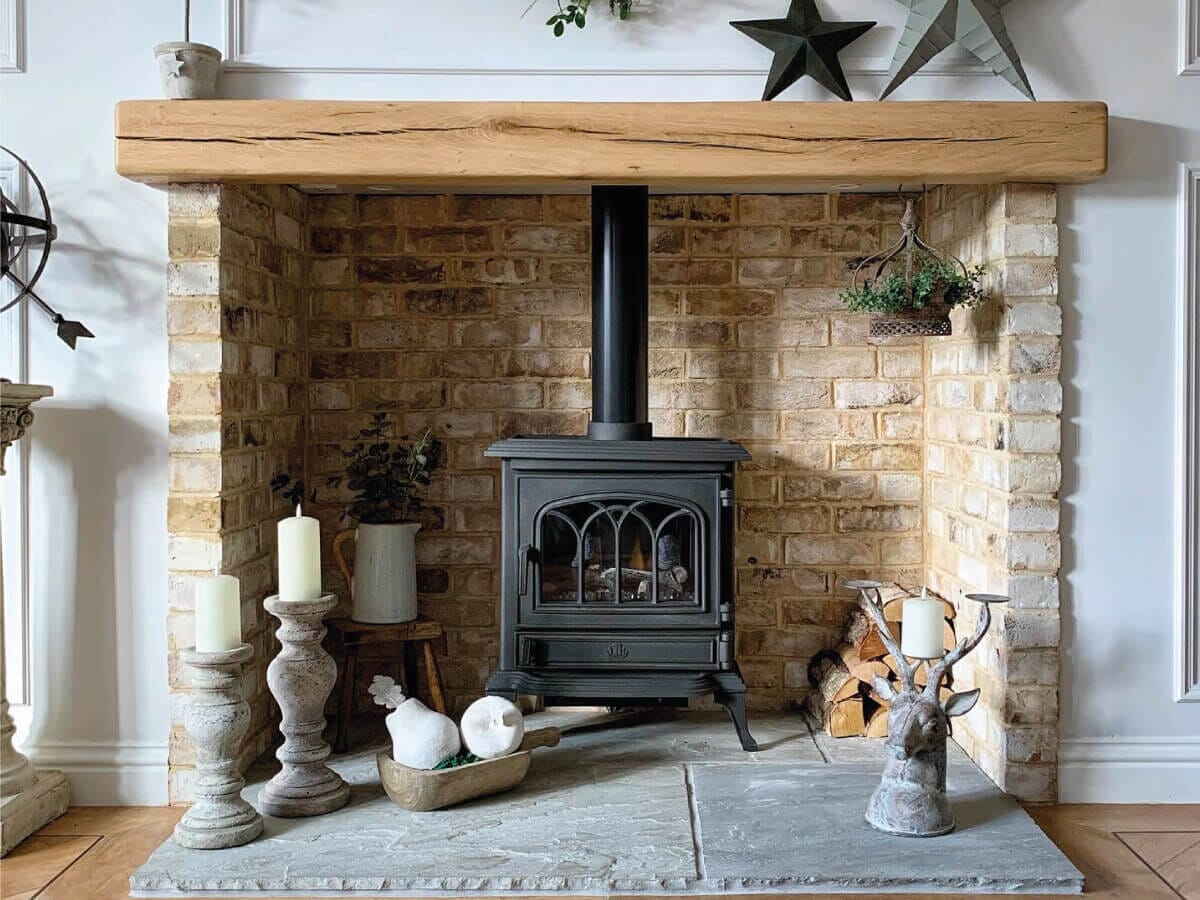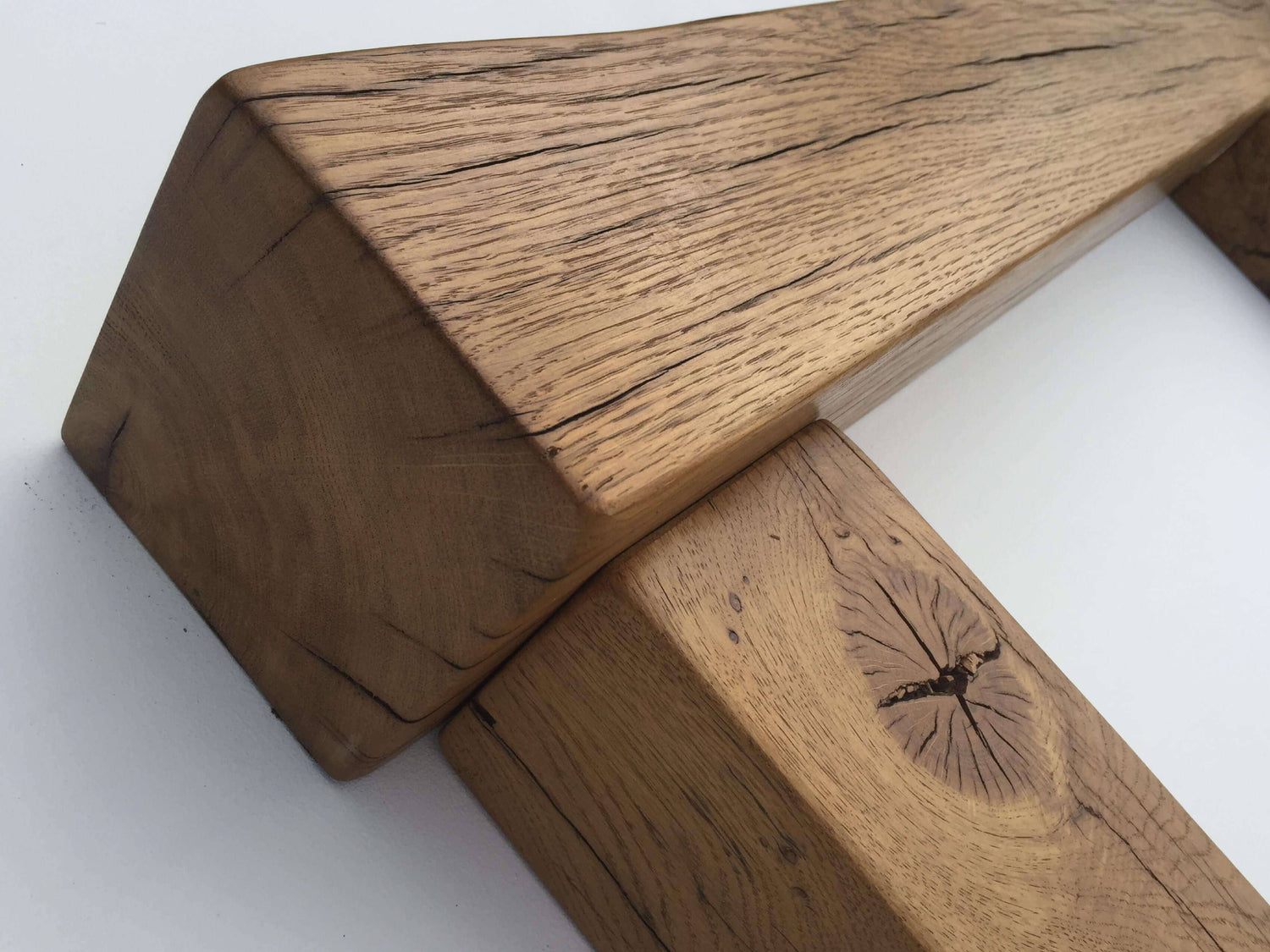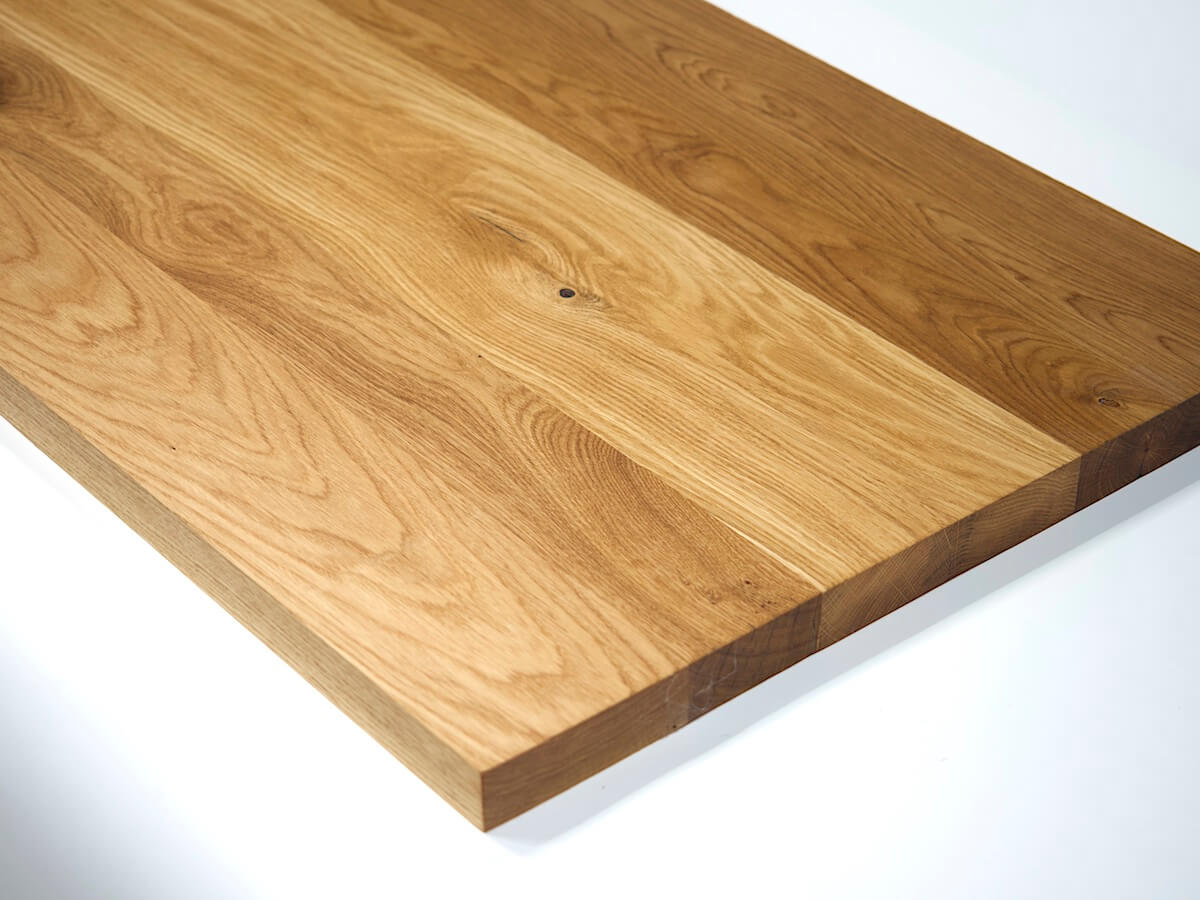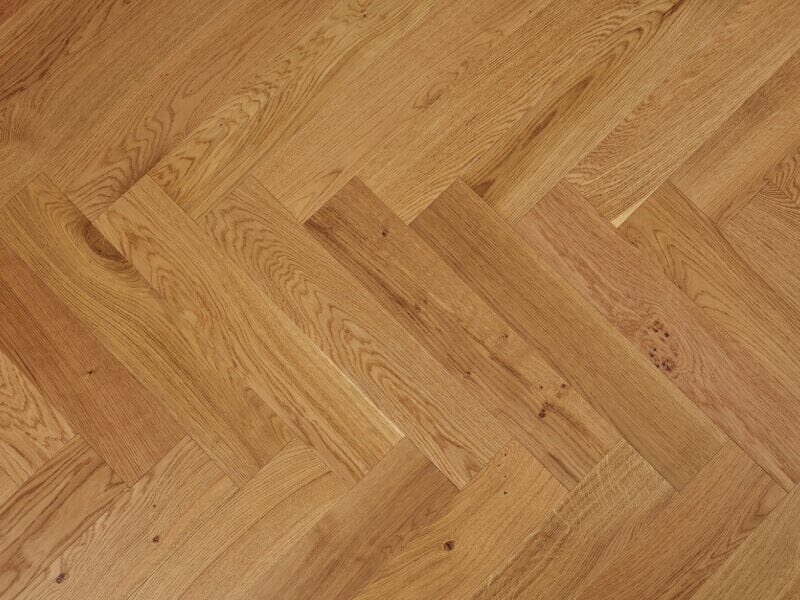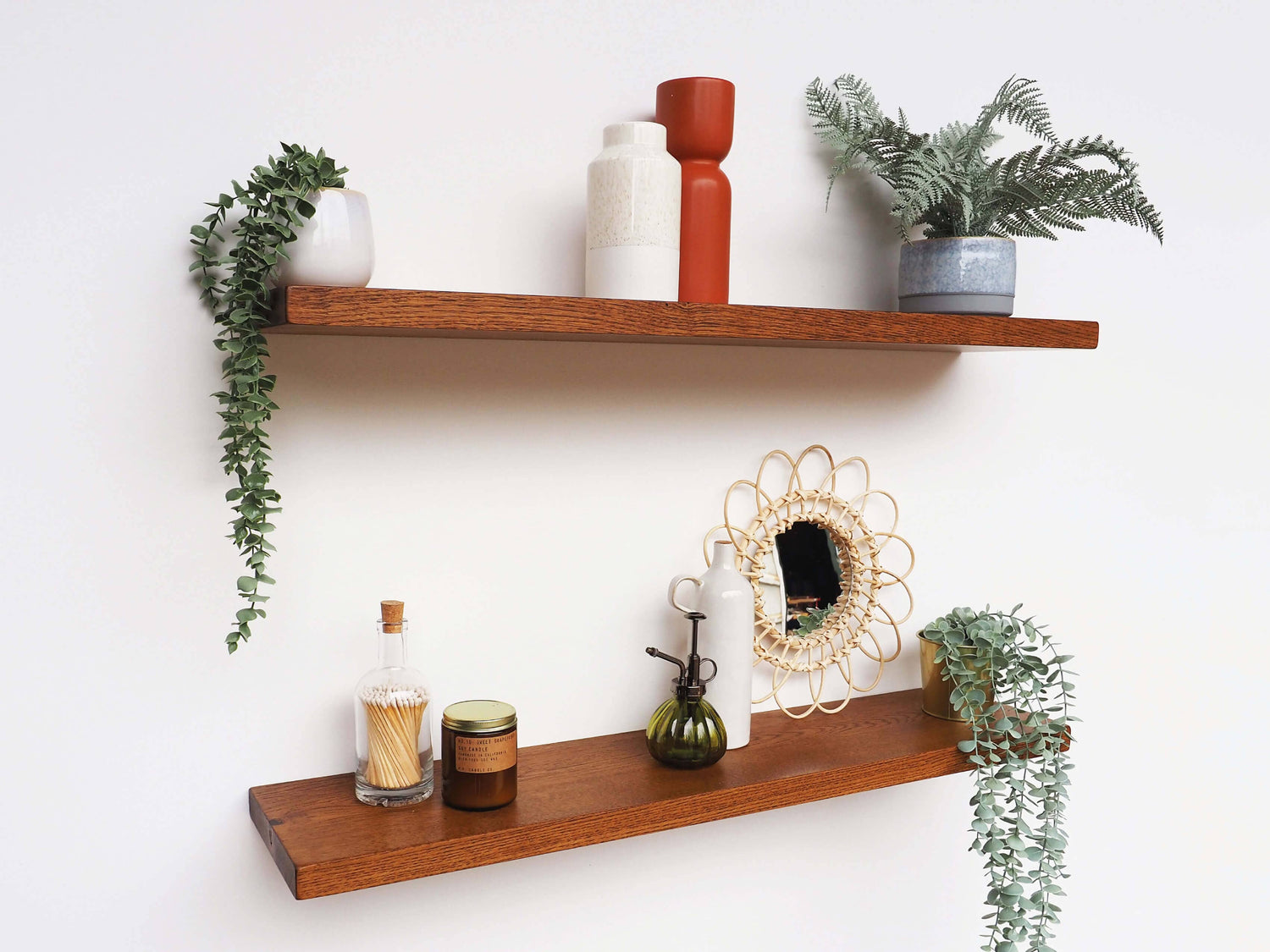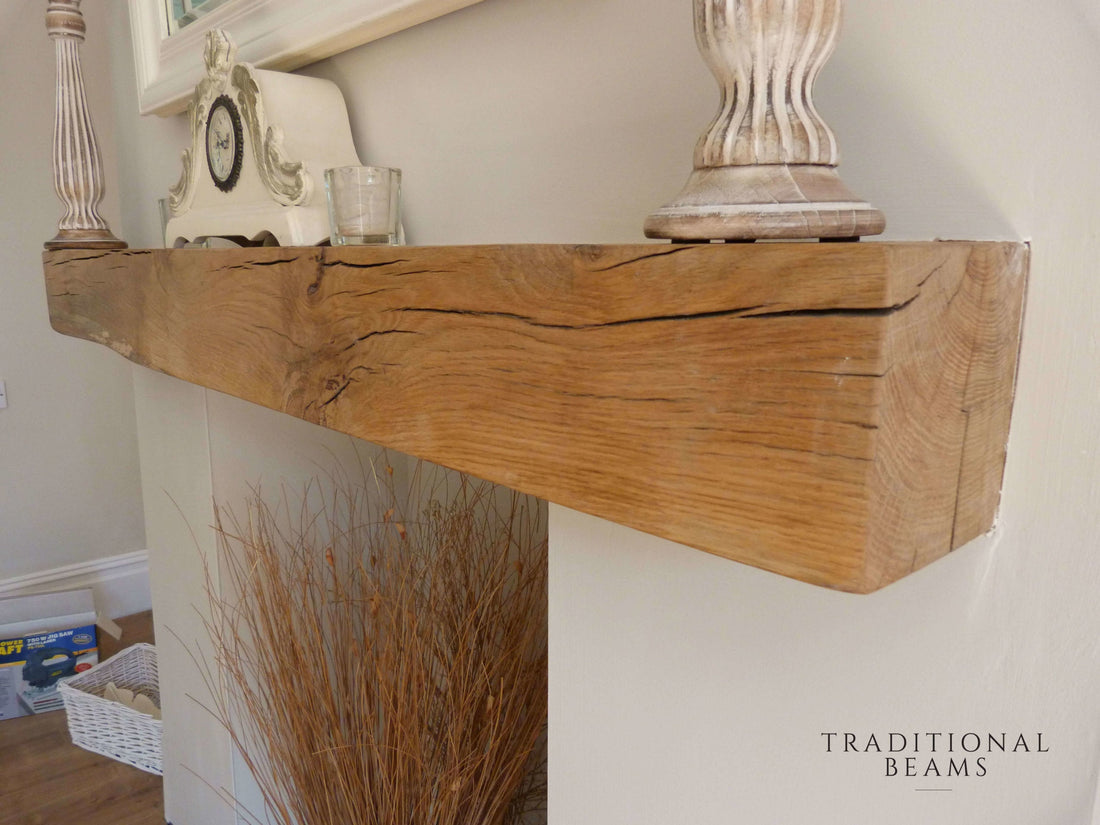
Factors to consider when choosing an oak beam
Share
There are many factors to consider when choosing the perfect oak beam. In this small article we will attempt to put your mind at ease when it comes to ordering an oak beam. We’ll explain the difference between green oak and air dried oak, how various section sizes affect the appearance of an oak beam and a brief overview on grading.
The most important factor when it comes to buying an oak beam to install above your wood burning stove is that it is well air dried. Although perfectly suitable for outdoor use, partially air dried, or green oak (fresh sawn oak) is not suitable for use internally. If installed in your central heated home it is likely to crack, split, shrink, twist and bend as it quickly dries out. So how do you tell an air dried beam from a green oak beam? The most obvious characteristic to look our for are cracks! Almost all air dried beams will have cracks present, be very wary of beams that are totally absent of cracks as this usually means the beam has not started the drying out process.
The appearance of an air dried oak beam can vary tremendously, here are a few factors to consider. Cracks are probably the most eye catching characteristic of air dried oak beams and can potentially look unsightly if they’re too large. Although most beams we sell do contain cracks there is a great deal of variation. Square beams such as 6″x6″ are cut from the heart of the log and tent to contain more cracks and other interesting characteristics than smaller beams such as 6″x4″. Knots in our opinion are the most beautiful characteristic oak, they are a common feature in oak fireplace beams and do vary in size and colour. Typically knots can get up to around 50mm but shouldn’t be much larger.
What grade oak should I look for? Here at Traditional Beams we use a good quality structural grade oak, QP1 grade to be precise. This is the highest quality grade air dried oak available today. Generally oak beams of this grade have a lovely straight grain, small knots and cracks. Crucially our oak beams are air dried for at least 3 years meaning they’re perfect for internal use. Lesser quality QP2 grade oak beams are available and provided air dried sufficiently they’re perfectly fine for internal use above a log burner, however they will contain larger knots, cracks and have areas of wane.
The final factor to consider is how you plan on fitting your beam. The concealed bracket we supply with most finished fireplace beams are suitable for fixing to brick, stone, breeze block and stud walls where timber can be located. Unfortunately they are not suitable for fixing into plasterboard alone. They are also unsuitable if you have an unusually large void from the plasterboard to your solid wall. There are other fixing methods we can advise you on in this situation.
Will my beam crack more once installed in my home? Probably the most commonly asked question. As oak beams are only air dried and acclimatized to our British climate it is inevitable that further cracks and existing cracks will develop once your beam adjusts to the temperature of your central heated home. This is why proper air drying of the beam first is crucial to get the beam as dry as possible before this final drying process in your home. Although we do everything we can to ensure further crack development is kept to a minimum part of the responsibility is passed onto the customer. We recommend storing your beam in you home for at least 2 weeks before installing above an intense heat source such as a wood burning stove. Once installed, increase the temperature of your stove gradually.
We hope this short article has been insightful and we welcome any comments!

